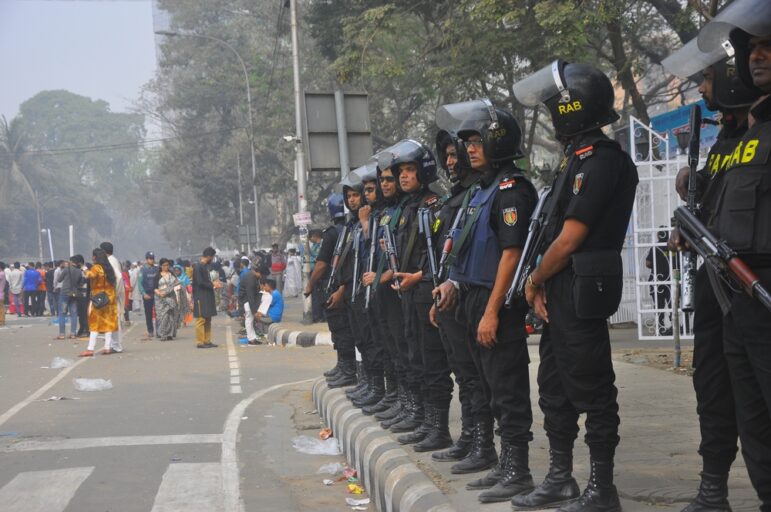Bane, because in 2004, the executive editor of the Times, cowed by Bush administration officials, twice spiked Risen’s story revealing that the National Security Agency had launched a massive, covert wiretapping program that was riffling through the personal communications of hundreds of millions of Americans without even a secret court order. Unbowed, Risen got a contract for a book that would reveal the NSA’s extralegal program. Only when the publication of State of War: The Secret History of the CIA and the Bush Administration appeared imminent did his editors, cornered, allow Risen to publish a version of it (co-authored with his colleague Eric Lichtblau) in the paper. And that disturbing saga provides the backdrop to Risen’s new book, Pay Any Price: Greed, Power and Endless War.
After turning the last page of his latest volume, one might wonder what other important stories the Times has spiked in recent years. Although parts of Risen’s new revelations have been published in the Times or elsewhere, here they are fleshed out in richly reported chapters studded with eye-popping new charges. Read together, they offer an original and deeply disturbing perspective on the war on terror. It is, Risen writes, a story of “how greed and the hunt for cash have all too often become the main objects of the war on terror.”
In fine detail, he demonstrates how the courts, Congress and the national security and law enforcement agencies of the executive branches – aided and abetted by the high priests of the media – have been corrupted in the hugely profitable business of pursuing terrorists. “[T]he search for money and power have become the hallmarks of the war on terror,” Risen writes of one of the many unsavory episodes in the book. “The story,” he says of another episode, “shows how, during the war on terror, greed and ambition have been married to unlimited rivers of cash in the sudden deregulation of American national security to create a climate in which clever men could seemingly create rogue intelligence operations with little or no adult supervision.”
The U.S.-led war in Iraq, as we already know, was rife with lax supervision and thievery. But Risen adds an astonishing new chapter to that reprehensible folly. He tells the story of how billions of dollars intended to rebuild Iraq, shrink-wrapped in packets of $100 bills, were shipped out of a Federal Reserve warehouse in New Jersey to Baghdad and eventually made their way to secret Lebanese bunkers (an account excerpted by the Times last week).
“Approximately $2 billion of the money that was flown from the United States to Baghdad” to prop up the Iraqi government after Saddam Hussein was toppled, “was stolen and secretly transported out of Iraq in what may be one of the largest robberies in modern history,” he writes. “…In addition to cash, hundreds of millions of dollars worth of gold was stolen from the Iraqi government and is also being hidden in Lebanon, current and former U.S. officials have said.”
One might assume that U.S. officials would be deeply interested in finding out what happened to that money, not to mention eager to get it back. But, no. “The CIA and FBI, along with the Pentagon and State Department, have all been told about the theft of the cash, and have received evidence about the bunker in Lebanon and other locations where the cash is believed to be hidden,” he writes. “But the agencies have not tried to retrieve the money. Nobody went after it during the Bush administration, nor has the Obama administration tried. Instead, the US government has kept the entire matter secret.”
Why? Too many hands are dirty. “Like so many things about the Iraq war, the cash flights from New York started with good intentions. But ideology, chaos, and finally greed all got in the way.”
Stuart Bowen, a U.S Treasury official who tried to get to the bottom of those stolen billions, is one of the rare good guys in Risen’s book. Most of the stories feature hustlers who conned gullible White House, Pentagon and intelligence officials into backing multi-million dollar counterterrorism scams.
Take, for example, Dennis Montgomery, a habitué of the gambling tables in Reno, who “saw the post-9/11 age for what it was, a time to make money.” Montgomery scammed investors and CIA Director George Tenet into believing he had invented software that could detect hidden messages in al Qaeda videos broadcast on Al Jazeera. In late 2003, Montgomery’s scam stampeded the White House into grounding European U.S.-bound airliners and thinking about shooting them down.
In the war on terror, Risen shows again and again, anything goes, no matter how monkey-brained the scheme, especially if huge sums can be made. One of his chief culprits is the U.S. Special Operations Command, which emerges in Risen’s telling as a kind of slow witted younger brother to James Bond. “U.S. Special operations command, the military command involved in the raid to get Osama bin Laden, experienced rapid growth in power and status within the Pentagon after 9/11…. “ he writes. “With an expanded global role, [it] began to think that it needed its own version of the CIA. One idea was to set up front companies through which to conduct intelligence operations.”
All sorts of opportunists and oddballs show up in these operations. One of the most intriguing is Mike Asimos, a 1984 West Point graduate and former stockbroker with a criminal past who pops up in several wacky Pentagon spy schemes, one of which funneled hundreds of thousands of dollars to front companies to gather intelligence and carry out assassinations in the Middle East. “In that, Asimos was hardly alone in the post 9/11 world,” Risen writes. “He was one of many dream weavers who flourished in Washington’s global war on terror, cashing in on the counterterrorism gold rush. What the stock market in the Internet bubble were to the 1990s, the counterterrorism bubble was for the first years of the new millennium, and there was a cadre of men willing and able to take advantage.”
One of them was a Jordan-based Palestinian by the name of Nazem Houchaimi, a con man Asimos helped set up as an intelligence front with $600,000, no matter that Houchaimi ran the company “as a family enterprise, bringing in his father… as a paid intelligence asset and his sister… to manage the business.” Houchaimi ended up, “right in the middle of what appeared to be a runaway covert action program that had triggered a top-secret criminal investigation by counterintelligence agents from the FBI, amid allegations of attempted money laundering, illicit arms dealing, and other questionable activities.” Meanwhile, such operations produced tons of “intelligence” reports that “languished” because the Special Operations Command “had not yet developed the infrastructure needed to process and analyze the information once it began to come in.”
And so on, and on and on… Not even the American Psychological Association, whose internal emails obtained by Risen reveal its complicity in spurious CIA torture methods, is beyond the financial blandishments of the war on terror.
Risen’s journey down this rabbit hole was propelled by the sad story of Diane Roark, “perhaps the most courageous whistleblower of the post-9/11 era… who fought a lonely battle against the most powerful forces unleashed in Washington in the global war on terror, yet her story has never been fully told.”
In the mid-1990s Roark, a Republican staffer on the House intelligence committee with particular responsibility for oversight of the NSA, became concerned that the super-secret, hide-bound agency, then headed by Air Force Gen. Michael V. Hayden (later to become CIA director) was ignoring the kind of technological advances sweeping through Silicon Valley. One eavesdropping program in particular, code-named Trailblazer, was an outdated and massive waste of money, she thought. “A massive computer crash that lasted for three days at the NSA in January 2000 only increased her skepticism, and made her realize that the agency had to undergo fundamental change,” Risen writes.
Meanwhile, “her doubts made Roark a natural ally for a brilliant maverick like Bill Binney,” a senior NSA manager who had championed a cheaper, better rival to Trailblazer that had the added virtue of built-in privacy protections to shield U.S. citizens from the NSA’s robotic spies.
“After listening to Binney, Roark believed that [NSA spying operations] violated the Constitution.” So did two other NSA officials, Kirk Wiebe and Thomas Drake, who also tried to reform the program from within. In the end, however, their efforts to derail Trailblazer and other wasteful and reckless spying programs not only failed, but ended in career suicide and government retaliation (including the prosecution of Drake on espionage charges–later dropped). But as in many such cases, their concerns finally found an outlet with Risen (who has had to spend the last several years fighting off Justice Department threats to jail him for refusing to reveal his sources on another CIA fiasco in Iran).
As he fearlessly recounts here once again, however, the Times spiked his stories on the NSA misdeeds. This time around, he writes, he wasn’t going to be dissuaded. Indeed, the closing paragraphs of “Pay Any Price” amounts to a bitter “J’Accuse” against the paper’s editors, who so often set the news agenda for the rest of the American media.
“I was frustrated and deeply concerned that the truth about the war on terror was being covered up. Before the invasion of Iraq, my stories that revealed that CIA analysts had doubts about the prewar intelligence on Iraq were held, cut and buried deep inside the Times,” he writes, “even as stories by other reporters loudly proclaiming the purported existence of Iraqi weapons of mass destruction were garnering banner headlines on page one.”
No such weapons, of course, were ever found. But the invasion of Iraq, enabled by phony intelligence reports trumpeted by the credulous media, quickly spiralled into chaos, eventually giving birth to the fractured nation’s Rosemary’s Baby, the Islamic State.
“I decided,” he says of his decision to reveal the NSA spying, “I wasn’t going to let that happen again.”
This time, alas, it’s too late.
Reprinted with permission from Newsweek.















